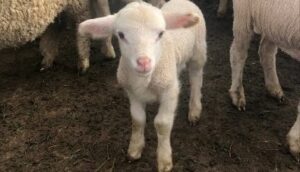 With autumn calves and lambs on the ground many producers are starting to plan for marking. Maintaining high biosecurity standards at marking is critical for ensuring good post-marking recovery. Infection, pain and slow wound healing as well as production losses are all consequences of poor marking technique/biosecurity practices.
With autumn calves and lambs on the ground many producers are starting to plan for marking. Maintaining high biosecurity standards at marking is critical for ensuring good post-marking recovery. Infection, pain and slow wound healing as well as production losses are all consequences of poor marking technique/biosecurity practices.
Here are a few things to consider when planning for marking:
- What procedures will your livestock require? Calves and lambs may need ear tagging, ear marking, vaccinations and castrations, while calves may also need branding and lambs may have acute procedures that reduce the risk of worse welfare outcomes over their life e.g. tail docking/mulesing.
- It is important to consider whether you own or have access to all the necessary equipment to complete these procedures as humanely and safely as possible. Further, is the equipment in good-working order and free from debris? It is recommended to wash, disinfect and service your equipment after you use it. Storage of clean equipment in a dust-proof container is a good way to ensure that you will always be prepared. If you need to borrow equipment from another producer, ensure you thoroughly wash and disinfect the equipment before and after use.
- What facilities will you need to complete marking? Have you got a crush or cradle for calves, or cradles for lambs and is it appropriately clean? Location of cradles can also impact the quality of marking procedures, especially for lambs due to a greater potential for infection. Identify a clean, preferably grassy or low dust area; when setting up lamb marking cradles.
- Do you have enough labour to complete marking? If you need to hire a contractor or employ additional workers, it is essential that they arrive with clean clothing, boots and equipment. Providing a washdown area (this can be as simple as a bucket of water, soap and a brush) is a really easy and effective way to ensure employees and contractors don’t walk disease and weed seeds into your working areas.
- When you are marking, ideally have two buckets for disinfection – one for your equipment and one for your hands. Disinfectant in buckets should be changed regularly, and disinfectant should be made according to label directions. Regularly washing your equipment and hands during the process and, if possible, between animals will help reduce the risk of infections in animals.
- When you let animals out of cradles ensure they can stand on their feet as this will reduce the risk of wounds getting dirty.
- The use of analgesia (pain relief) is highly recommended, not only for animal welfare but also to reduce the risk of lambs and calves laying down and contaminating any wounds.
 With autumn calves and lambs on the ground many producers are starting to plan for marking. Maintaining high biosecurity standards at marking is critical for ensuring good post-marking recovery. Infection, pain and slow wound healing as well as production losses are all consequences of poor marking technique/biosecurity practices.
With autumn calves and lambs on the ground many producers are starting to plan for marking. Maintaining high biosecurity standards at marking is critical for ensuring good post-marking recovery. Infection, pain and slow wound healing as well as production losses are all consequences of poor marking technique/biosecurity practices.